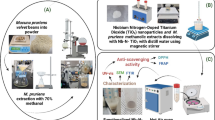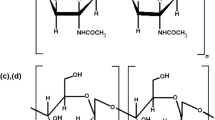Abstract
Turbo cornutus is an edible sea snail species whose viscera parts are by-products of fish processing. Although they can be used for human consumption as good sources of functional ingredients, they are generally discarded. The objective of the present study was to prepare bioactive hydrolysate (MSVAH) from viscera parts of T. cornutus using enzymatic hydrolysis, and to investigate their antioxidant and anti-hyaluronidase properties for use as potential functional food ingredients. In MSVAH, taurine was found to be the most abundant. Taurine is known to have excellent physiological activity. Taurine-enriched MSVAH showed good capacities of DPPH, peroxyl radical scavenging, and hyaluronidase inhibition, with IC50 values of 0.50 mg/mL, 0.32 mg/mL, and 2.87 mg/mL, respectively. MSVAH also significantly improved cell viability and inhibited intracellular reactive oxygen species (ROS) dose-dependently against oxidative stress induced by 2,2-azobis-(2-amidinopropane) dihydrochloride (AAPH), a free-radical-generating compound, in immortalized human keratinocytes (HaCaT cells). Furthermore, MSVAH upregulated hyaluronic acid (HA)-synthesizing enzyme hyaluronan synthase 2 (HAS2) expression level, but downregulated expression level of HA-degrading enzyme hyaluronidase 2 (HYAL2), resulting in increased HA production in keratinocytes. Taken together, these results suggest that taurine-enriched MSVAH derived from viscera parts of T. cornutus, known to be by-products of fish processing, could be used to prepare potential bioactive hydrolysates for developing functional foods and nutraceutical products.



Similar content being viewed by others
References
Araujo J, Sica P, Costa C, Márquez MC (2021) Enzymatic hydrolysis of fish waste as an alternative to produce high value-added products. Waste Biomass Valor 12:847–855
Atef M, Ojagh SM (2017) Health benefits and food applications of bioactive compounds from fish byproducts: a review. J Funct Foods 35:673–681
Baliou S, Adamaki M, Ioannou P, Pappa A, Panayiotidis MI, Spandidos DA, Christodoulou I, Kyriakopoulos AM, Zoumpourlis V (2021) Protective role of taurine against oxidative stress (review). Mol Med Rep 24:605
Barrow C, Shahidi F (2008) Marine nutraceuticals and functional foods. CRC Press, New York
Ding Y, Ko SC, Moon SH, Lee SH (2019) Protective effects of novel antioxidant peptide purified from alcalase hydrolysate of velvet antler against oxidative stress in Chang liver cells in vitro and in a zebrafish model in vivo. Int J Mol Sci 20:5187
Ganceviciene R, Liakou AI, Theodoridis A, Makrantonaki E, Zouboulis CC (2012) Skin anti-aging strategies. Dermato-endocrinol 4:308–319
Halim NRA, Yusof HM, Sarbon NM (2016) Functional and bioactive properties of fish protein hydrolysates and peptides: a comprehensive review. Trends Food Sci Technol 51:24–33
Han EJ, Um JH, Kim EA, Lee W, Kang N, Oh JY, Park SY, Jeon YJ, Ahn CB, Lee SH, Ahn G (2017) Protective effects of an water extracts prepared from Loliolus beka gray meat against H2O2-induced oxidative stress in Chang liver cells and zebrafish embryo model. Adv Exp Med Biol 975:585–601
Harman D (1981) The aging process. Proc Natl Acad Sci USA 78:7124–7128
Hiramoto K, Johkoh H, Sako K, Kikugawa K (1993) DNA breaking activity of the carbon-centered radical generated from 2,2′-azobis(2-amidinopropane) hydrochloride (AAPH). Free Radic Res Commun 19:323–332
Imae M, Asano T, Murakami S (2014) Potential role of taurine in the prevention of diabetes and metabolic syndrome. Amino Acids 46:81–88
Ishak NH, Sarbon NM (2018) A review of protein hydrolysates and bioactive peptides deriving from wastes generated by fish processing. Food Bioprocess Technol 11:2–16
Jiratchayamaethasakul C, Ding Y, Hwang O, Im ST, Jang Y, Myung SW, Lee JM, Kim HS, Ko SC, Lee SH (2020) In vitro screening of elastase, collagenase, hyaluronidase, and tyrosinase inhibitory and antioxidant activities of 22 halophyte plant extracts for novel cosmeceuticals. Fish Aquatic Sci 23:6
Kang N, Kim EA, Kim J, Lee SH, Heo SJ (2021) Identifying potential antioxidant properties from the viscera of sea snails (Turbo cornutus). Mar Drugs 19:567
Ko SC, Lee JK, Byun HG, Lee SC, Jeon YJ (2012) Purification and characterization of angiotensin I-converting enzyme inhibitory peptide from enzymatic hydrolysates of Styela clava flesh tissue. Process Biochem 47:34–40
Ko JY, Lee JH, Samarakoon K, Kim JS, Jeon YJ (2013) Purification and determination of two novel antioxidant peptides from flounder fish (Paralichthys olivaceus) using digestive proteases. Food Chem Toxicol 52:113–120
Lee SH, Yang HW, Ding Y, Wang Y, Jeon YJ, Moon SH, Jeon BT, Sung SH (2015) Anti-inflammatory effects of enzymatic hydrolysates of velvet antler in RAW 264.7 cells in vitro and zebrafish model. EXCLI J 14:1122–1132
Luo F, Xing R, Wang X, Peng Q, Li P (2017) Proximate composition, amino acid and fatty acid profiles of marine snail Rapana venosa meat, visceral mass and operculum. J Sci Food Agric 97:5361–5368
Nanjo F, Goto K, Seto R, Suzuki M, Sakai M, Hara Y (1996) Scavenging effects of tea catechins and their derivatives on 1,1-diphenyl-2-picrylhydrazyl radical. Free Radic Biol Med 21:895–902
Papakonstantinou E, Roth M, Karakiulakis G (2012) Hyaluronic acid: a key molecule in skin aging. Dermatoendocrinol 4:253–258
Rinnerthaler M, Bischof J, Streubel MK, Trost A, Richter K (2015) Oxidative stress in aging human skin. Biomolecules 5:545–589
Ryan JT, Ross RP, Bolton D, Fitzgerald GF, Stanton C (2011) Bioactive peptides from muscle sources: meat and fish. Nutrients 3:765–791
Salze GP, Davis DA (2015) Taurine: a critical nutrient for future fish feeds. Aquaculture 437:215–229
Siddik MAB, Howieson J, Fotedar R, Partridge GJ (2021) Enzymatic fish protein hydrolysates in finfish aquaculture: a review. Rev Aquac 13:406–430
Sotelo CG, Blanco M, Ramos P, Vázquez JA, Perez-Martin RI (2021) Sustainable sources from aquatic organisms for cosmeceuticals ingredients. Cosmetics 8:48
Tobin DJ (2017) Introduction to skin aging. J Tissue Viability 26:37–46
Um JH, Kim EA, Lee W, Kang N, Han EJ, Oh JY, Park SY, Jeon YJ, Lee SH, Ahn G (2017) Protective effects of an enzymatic hydrolysate from Octopus ocellatus meat against hydrogen peroxide-induced oxidative stress in Chang liver cells and zebrafish embryo. Adv Exp Med Biol 975:603–620
Wright CE, Tallan HH, Lin YY (1986) Taurine: biological update. Annu Rev Biochem 55:427–453
Zamora-Sillero J, Gharsallaoui A, Prentice C (2018) Peptides from fish by-product protein hydrolysates and its functional properties: an overview. Mar Biotechnol (NY) 20:118–130
Zhang SS, Han LW, Shi YP, Li XB, Zhang XM, Hou HR, Lin HW, Liu KC (2018) Two novel multi-functional peptides from meat and visceral mass of marine snail Neptunea arthritica cumingii and their activities in vitro and in vivo. Mar Drugs 16:473
Acknowledgements
This research was funded by the Ministry of Small and Medium-sized Enterprises (SMEs) and Startups (MSS), Korea, under the “Regional Specialized Industry Development Plus Program (R&D, S3083328)” supervised by the Korea Institute for Advancement of Technology (KIAT) and research grants from the Korea Institute of Ocean Science and Technology (PEA0022). It was also supported by Soonchunhyang University Research Fund.
Author information
Authors and Affiliations
Corresponding authors
Additional information
Publisher’s Note
Springer Nature remains neutral with regard to jurisdictional claims in published maps and institutional affiliations.
Rights and permissions
About this article
Cite this article
Im, S.T., Kang, N., Kim, J. et al. Antioxidant and anti-hyaluronidase activities of taurine-enriched enzymatic hydrolysates prepared from Turbo cornutus, a by-product of fish processing in Jeju Island. Fish Sci 88, 509–517 (2022). https://doi.org/10.1007/s12562-022-01605-1
Received:
Accepted:
Published:
Issue Date:
DOI: https://doi.org/10.1007/s12562-022-01605-1




